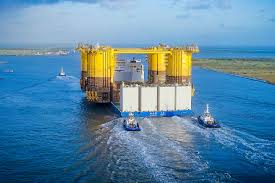Oil markets brace for Trump to kill Iran deal

The Iran nuclear deal may be doomed, at least if you believe the global oil market.
Oil prices have surged partly because of mounting expectations that President Trump will kill the 2015 agreement, which allowed Iran to export more crude. Trump must decide by May 12 whether to re-impose sanctions on the OPEC nation.
Brent crude, the global benchmark, briefly soared above $ 75 a barrel on Monday after Israel leveled new nuclear allegations against Iran.
Bringing back sanctions on Iran could knock out as much as 1 million barrels per day of crude supply, dealing a blow to increasingly fragile energy markets.
“There will be a significant disruption,” said Michael Wittner, global head of oil research at Societe Generale.
“The market is assuming that oil sanctions will snap back onto Iran,” he said.
Trump said on Monday that Israeli Prime Minister Benjamin Netanyahu’s speech on Iran helps show he’s “100% right” about the Iranian nuclear agreement, which was signed by former President Barack Obama.
“We’ll see what happens,” Trump said about his decision on the Iran deal. “I’m not telling you what I’m doing, but a lot of people think they know.”
Related: Iran deal: Who loses if Trump brings back sanctions
The oil market certainly thinks it knows. The price of Brent crude has soared 7% this year, and the US benchmark has soared 8% to nearly $ 69 a barrel for the first time since late 2014. Oil prices have been lifted by concerns about the fate of the Iran deal as well as strong demand and supply cuts by OPEC and Russia.
“The Iranian nuclear deal is dead in the water and a Trump torpedo is fast approaching,” Stephen Brennock, oil analyst at brokerage firm PVM Oil Associates, wrote to clients late last week.
Under the deal, Iran agreed to limits on its nuclear activities, including bans on enrichment at key facilities. In exchange, sanctions were lifted in early 2016, freeing Iran to quickly boost its oil production by about 1 million barrels per day. Iran found eager customers for its crude in Europe, Japan, India and South Korea.
It’s “now looking increasingly likely” that Trump will not renew the waiver on Iranian sanctions by May 12, according to energy research firm FGE.
Up to 1 million barrels at risk
If the sanctions are restored, FGE estimates that Iran’s output could be slashed by 250,000 to 500,000 barrels per day by the end of 2018. That figure would rise to 500,000 to 1 million per day through 2019.
But energy analysts are not certain that all of Iran’s oil production growth is at risk. That’s because France and other countries are urging Trump not to kill the nuclear deal.
While the European Union put a 100% embargo on Iranian crude oil imports when sanctions were imposed in 2012, Wittner doesn’t think the EU will necessarily go along if Trump restores sanctions.
Likewise, China has a voracious appetite for oil and may not wish to do Trump any favors in the midst of its trade spat with the United States, Wittner said.
Other American allies, including India, Japan and South Korea, are expected to cut Iran off.
Will prices spike?
Even though imposing sanctions on Iran would disrupt the oil market, the price impact may not be that dramatic considering how far prices have already risen.
“I don’t think you should expect an acute spike given the fact that it’s already been pretty well telegraphed,” said Brian Kessens, a portfolio manager at energy investment firm Tortoise Capital.
Wittner said that about half of the impact from the Iran deal collapsing has been priced in. He anticipates crude oil could jump another $ 5 per barrel once the news is confirmed.
Of course, that means oil prices could drop sharply if Trump decides to keep the Iranian deal intact.
Related: Why Exxon isn’t enjoying America’s big oil party
One thing that could give Trump pause: It’s a precarious time to put Iran back into the penalty box.
First, demand for oil is very strong thanks to the healthy world economy. Global oil demand grew during the first three months of 2018 at the fastest pace in nearly eight years, according to Goldman Sachs.
Another problem: OPEC and Russia have teamed up to boost prices by slashing production.
Trump attacked OPEC last month for higher prices, even though his own threats to the Iran deal have also played a role.
Trump has also threatened to hit Venezuela with oil sanctions that would further slash the OPEC nation’s crumbling output.
Who will step up?
If no one steps in to fill the void left by Iran, FGE warns that the gap between supply and demand could shrink to the tightest level since 2013, when oil prices were above $ 100 a barrel.
It’s possible the United States could step up by boosting exports. However, US output is already at record highs and it would take time to ramp up further. And pipelines in the Permian Basin, the prolific shale oil field in West Texas, are nearing full capacity.
Analysts said that Saudi Arabia is one of the only major countries that has the flexibility to make up for the loss of Iranian crude. Yet the Saudis have not signaled a desire to disrupt a strategy that has helped lift prices, and oil revenue.

